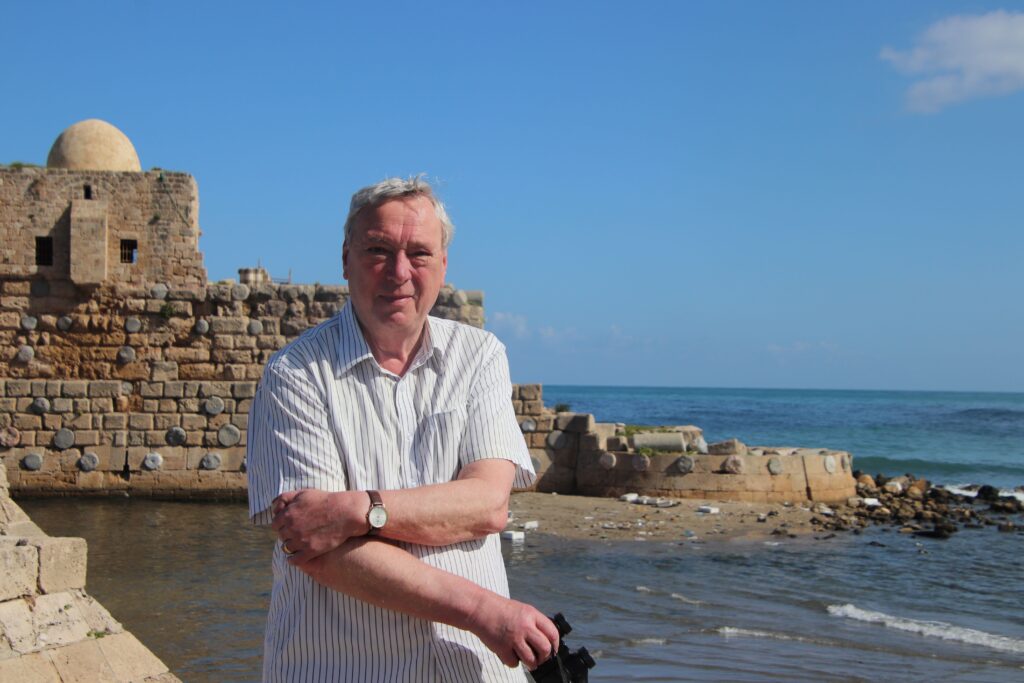by Richard T. Griffiths, Leiden University, The Netherlands.
The silk road is a romantic term for a network of routes that facilitated the exchange of goods and cultures across the Eurasian landmass from antiquity to the late middle-ages. The era was punctuated by periods of poverty and extreme violence, but when peace reigned, trade flourished and these were the heydays of the silk road. The religious, culinary, and linguistic maps of the continent reflect the legacy of millennia of cultural exchange, but the elite consumer goods that characterised much of the trade lie dispersed in museums and private collections spread over the entire globe. The Virtual Museum brings these artifacts together and makes them available to a wider public.
It is a sad fact that after childhood the only time that most people visit a museum is as a compulsory cultural stop of a holiday or a day out. Then, having trudged round for hours looking at artifacts whose significance they barely understand and anyway kept behind glass, they resolve not to repeat the experience for a while. A virtual museum is always open. It requires no travelling. It is never crowded. You can come, go, and revisit as you please. And it is free.
The world of today offers immediate visual access to images of conflict. Apocalyptic commentators talk in terms of clashes in civilisations, often cast in religious terms – Buddhists, Christians, Hindu, Jews, and Muslims – both Shiite and Sunni. Our reactions become cauterised; we do not understand; we don’t try to understand. The virtual museum allows us to stand back from our preconceptions and prejudices and to appreciate a distant culture, admittedly often an elite culture, from a past in which our emotions are less involved. It allows us to see how different cultures portrayed themselves and their surroundings, and how the art and artefacts influenced each other in form and decoration.
Virtual museums already exist. They fall into two broad categories. There are museums that allow a ‘virtual tour’ through the actual buildings and seeing the artifacts in situ. That enables the viewer to see everything, which in museums like the Louvre or the British Museum is a lot to assimilate and which can be off-putting. Moreover, the exhibits are only those on display in its own premises with the result that it is impossible to compare within and between genres and periods. There are museums that create a virtual tour of an exhibition. China is particularly prolific in this form of presentation. Unfortunately, the resolution is not sufficiently high to see the exhibits properly or their labelling, an issue not helped by the dark environment they seem to favour.

Screen shot of Nanjing (1368-1450) https://silkroadvirtualmuseum.com
The Silk Road Virtual Museum is being developed in cooperation with V21 Artspace. It offers a wide, light and roomy exhibition space. It exhibits many artefacts shown in the world’s museums (providing they offer the images) as well as artifacts in their collections, but not on public display, and some objects auctioned long ago and now in private collections. Written explanations are kept to a minimum and audio is employed to offer extra insights. All the commentary is in English, and in the local language of the culture displayed. At present, there are two museum sites, each chosen to represent a specific culture – Nanjing, the capital of the early Ming dynasty and the departure point for Admiral Zheng He’s famous seven treasure voyages, and Venice, the departure point for Marco Polo and the end point of the Maritime Silk Road. In September we will add Cilicia, the short-lived Armenian kingdom currently nestled in North-Eastern Turkey. The second languages are Chinese, Italian and Armenian respectively, Besides adding new locations, the museum will offer broad, themed, exhibitions. In October a new exhibition will open entitled Silk along the Silk Road. 600-1500CE, dedicated to the period after China had lost its producer monopoly, and when exchange was less in the silk itself and more in new patterns and motifs. By the end of the year, it will be joined by a second theme: After-Life along the Silk Road.
In addition to bringing together beautiful objects into one, easy location, we attempt to offer experiences not usually offered in physical locations. In Nanjing we allow hand-scrolls, sometimes metres long, slowly to unroll before the viewer’s eyes. In Cilicia we have placed one of the gospel volumes on a table where viewers can turn the pages for themselves. In every museum there is a information desk, to allow ‘visits’ to local places of interest and an excursion desk to allow visits further afield. There is alos a theatre with a Chinese opera in Nanjing and beautiful religious music in Venice and Sis, the capital of Cilicia. In the hope of stimulating deeper interest, each site is supported by en eLibrary of (free) online books and articles.
The project runs on a she-string with a credit line that will soon be exhausted. It can always use some help ranging from class projects to assemble the materials (there is a guide available), help in creating 3D objects for display and help in designing and preparing smaller ‘pop-up’ museum sites…. and a million and one other things too numerous to mention. Please feel free to come and visit.

Author
Richard T. Griffiths, Research Fellow, IIAS, Leiden, Director of Silk Road Virtual Museum Project, The Netherlands














